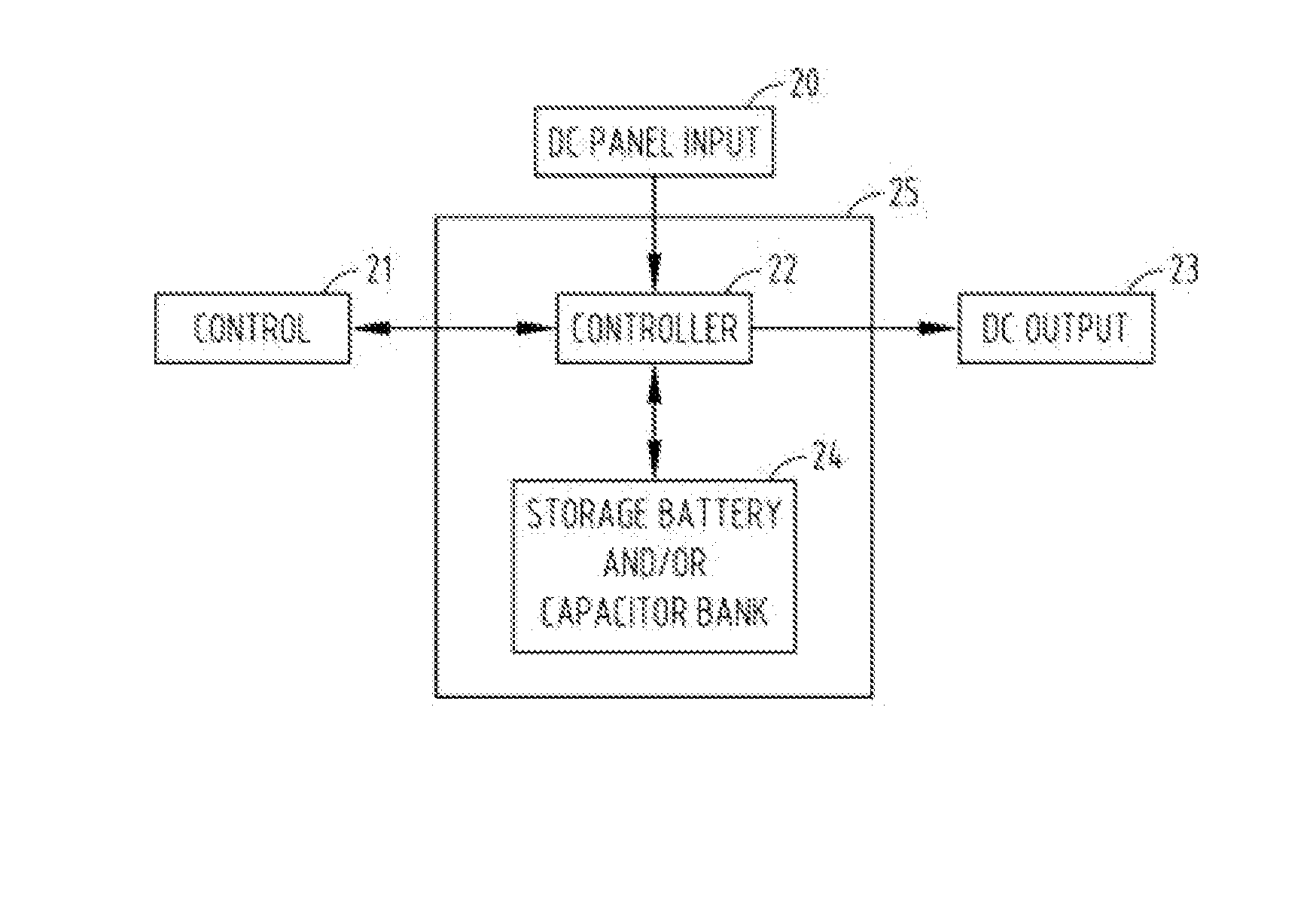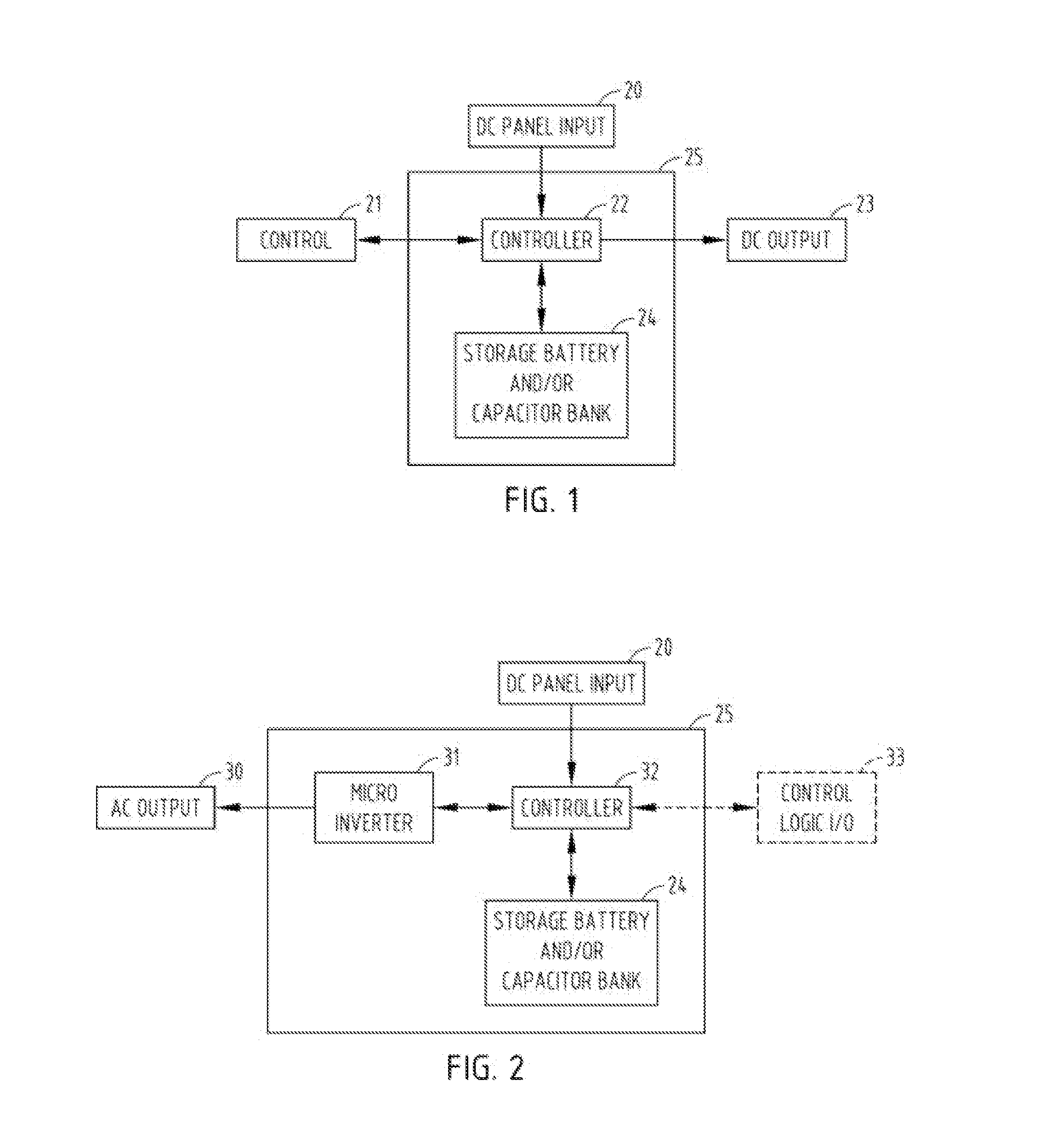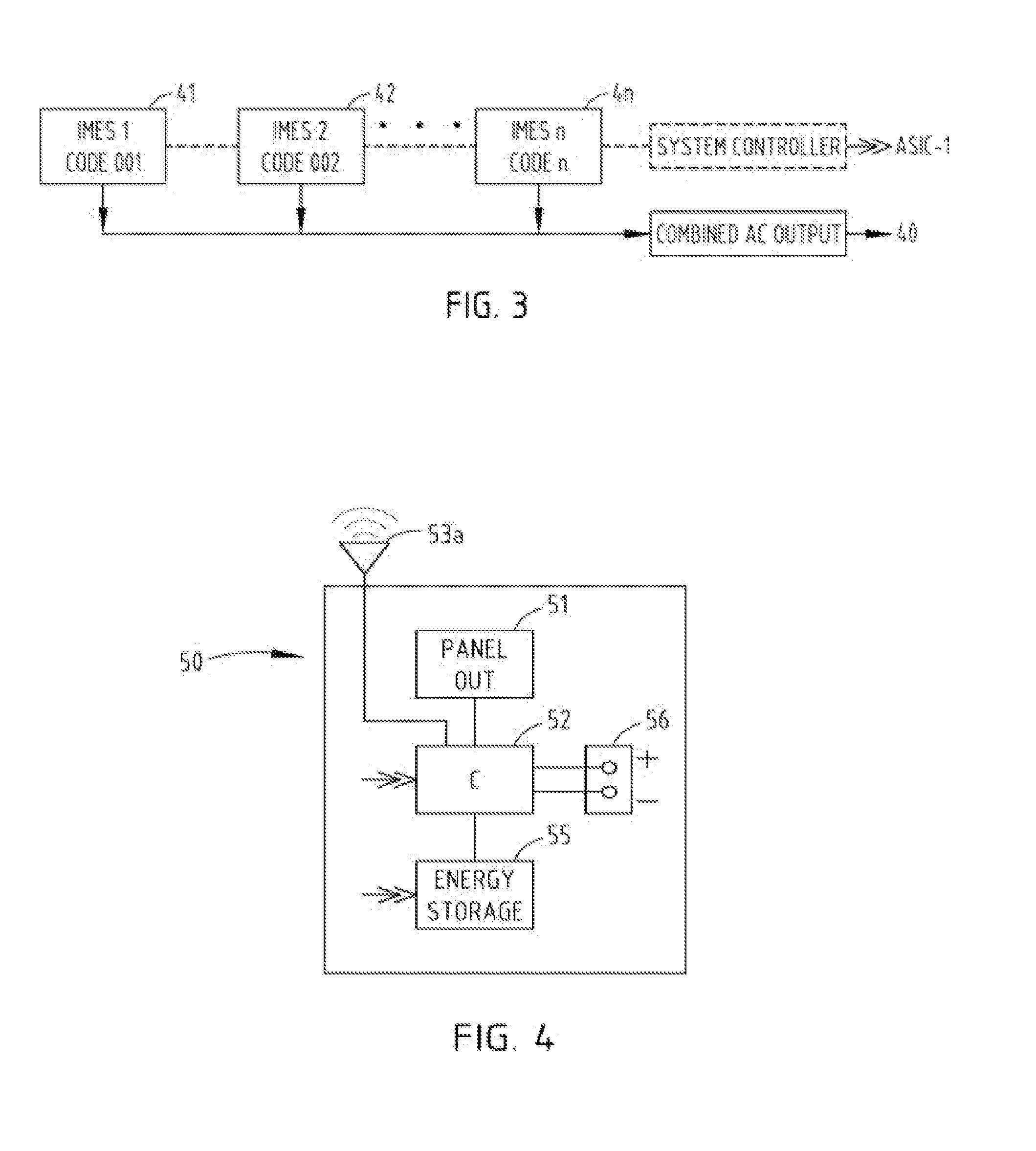Distributed energy storage and power quality control in photovoltaic arrays
a photovoltaic array and energy storage technology, applied in secondary cells servicing/maintenance, electrochemical generators, greenhouse gas reduction, etc., can solve the problems of increasing the size of the centralized battery bank, increasing the cost of thermal management, and having to use expensive forced air or liquid cooling approaches to achieve thermal management. , the function of solar-pv can be enhanced, and the control function can be advanced
- Summary
- Abstract
- Description
- Claims
- Application Information
AI Technical Summary
Benefits of technology
Problems solved by technology
Method used
Image
Examples
Embodiment Construction
[0027]A solar power generation, storage, and control system comprises a solar panel 25 or a plurality of solar panels or solar laminates or an assembly of concentrating PV elements, combined with an associated energy storage system 24 and an electronic control 22 circuit which senses and reports systems' operating parameters and either under internal settings or external control 21 stores and releases energy as Direct Current electrical power 23 as needed and as is available. (see FIG. 1).
[0028]A power generation, storage, and control system 25 comprises a solar panel 20 or a plurality of solar panels or laminates or an assembly of concentrating PV elements, combined with an associated energy storage system 24, a micro-inverter 31 for A.C. output, an electronic control circuit 32 which senses and reports systems' operating parameters, and either under internal settings or external control 33 stores and releases energy as alternating current electrical power as is needed or available...
PUM
 Login to View More
Login to View More Abstract
Description
Claims
Application Information
 Login to View More
Login to View More - R&D
- Intellectual Property
- Life Sciences
- Materials
- Tech Scout
- Unparalleled Data Quality
- Higher Quality Content
- 60% Fewer Hallucinations
Browse by: Latest US Patents, China's latest patents, Technical Efficacy Thesaurus, Application Domain, Technology Topic, Popular Technical Reports.
© 2025 PatSnap. All rights reserved.Legal|Privacy policy|Modern Slavery Act Transparency Statement|Sitemap|About US| Contact US: help@patsnap.com



